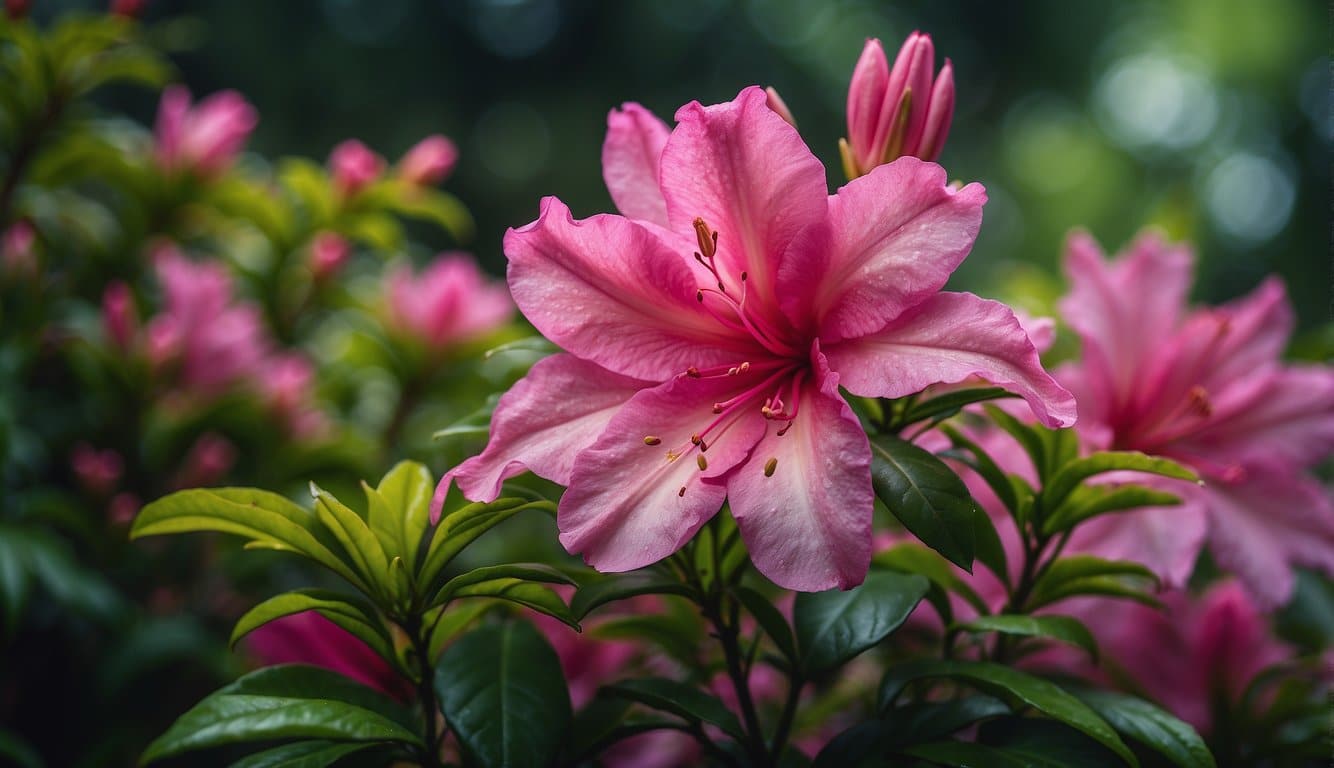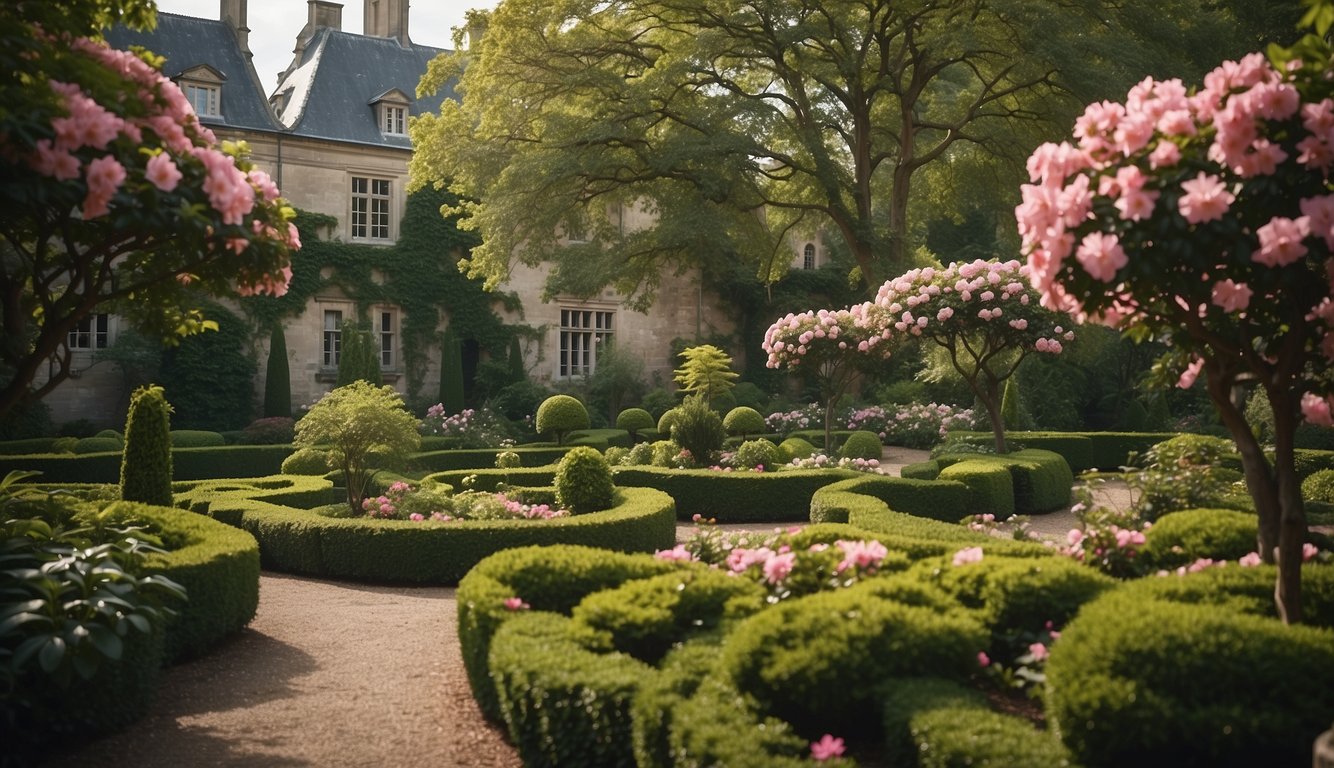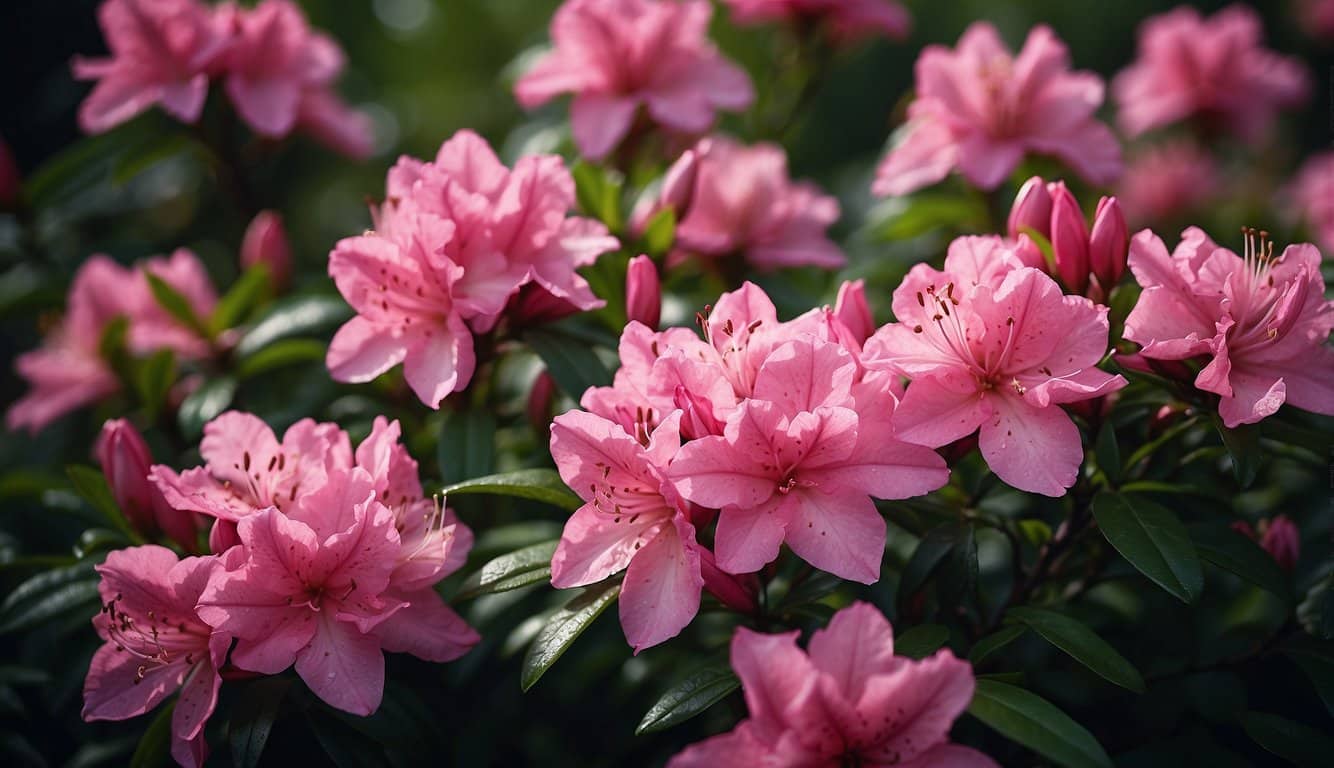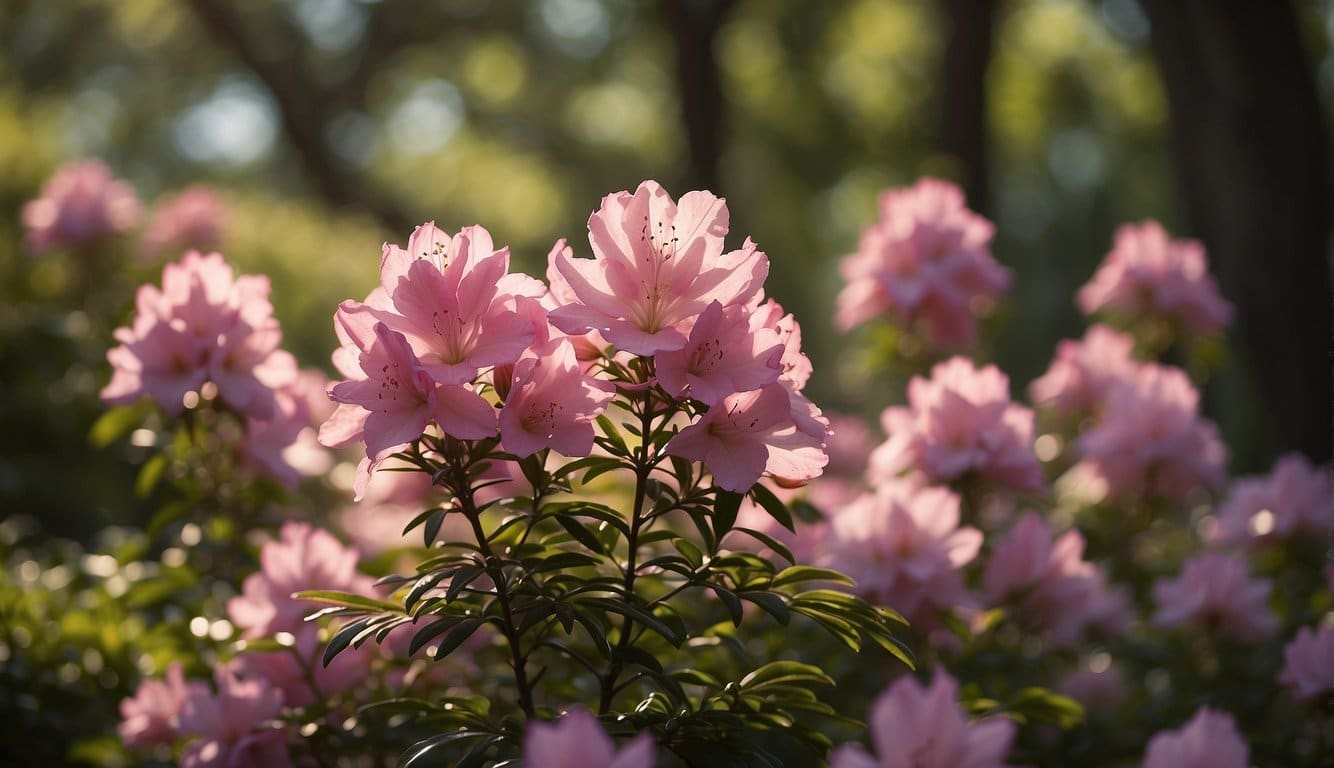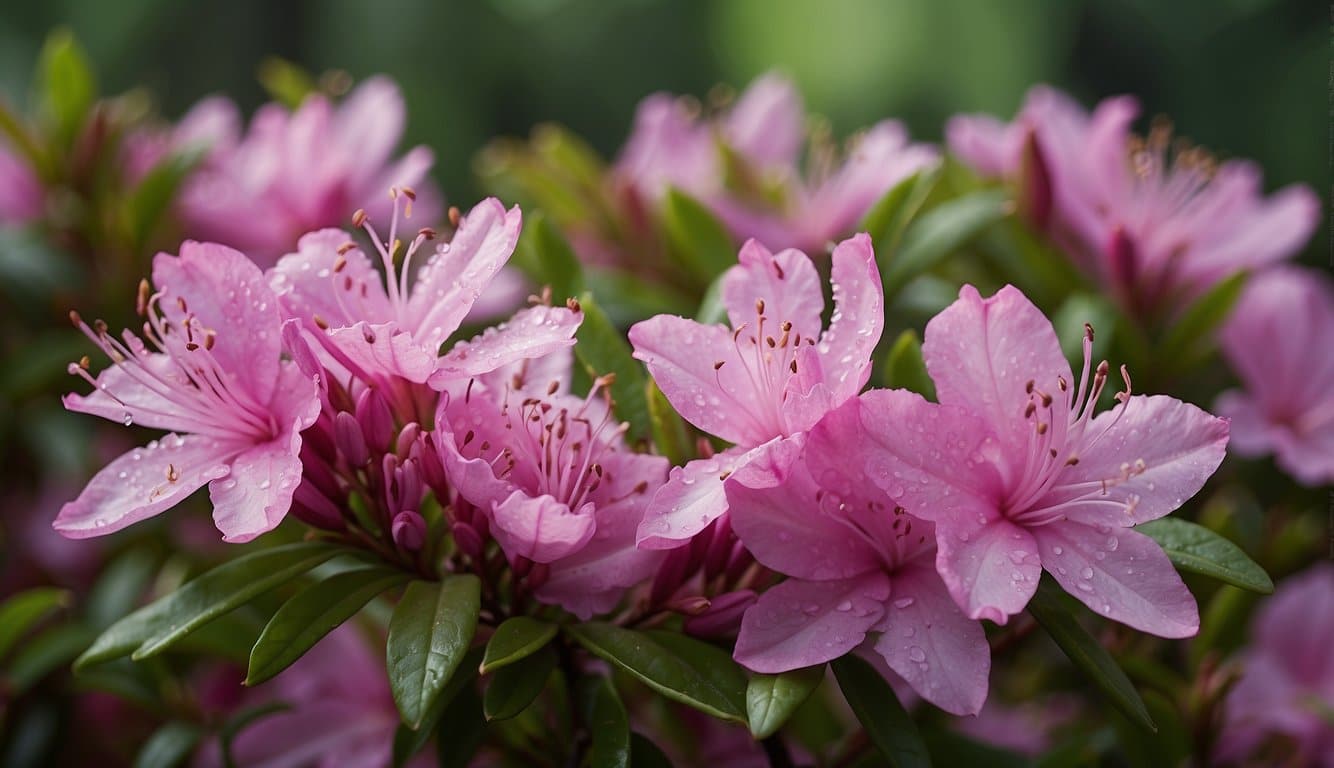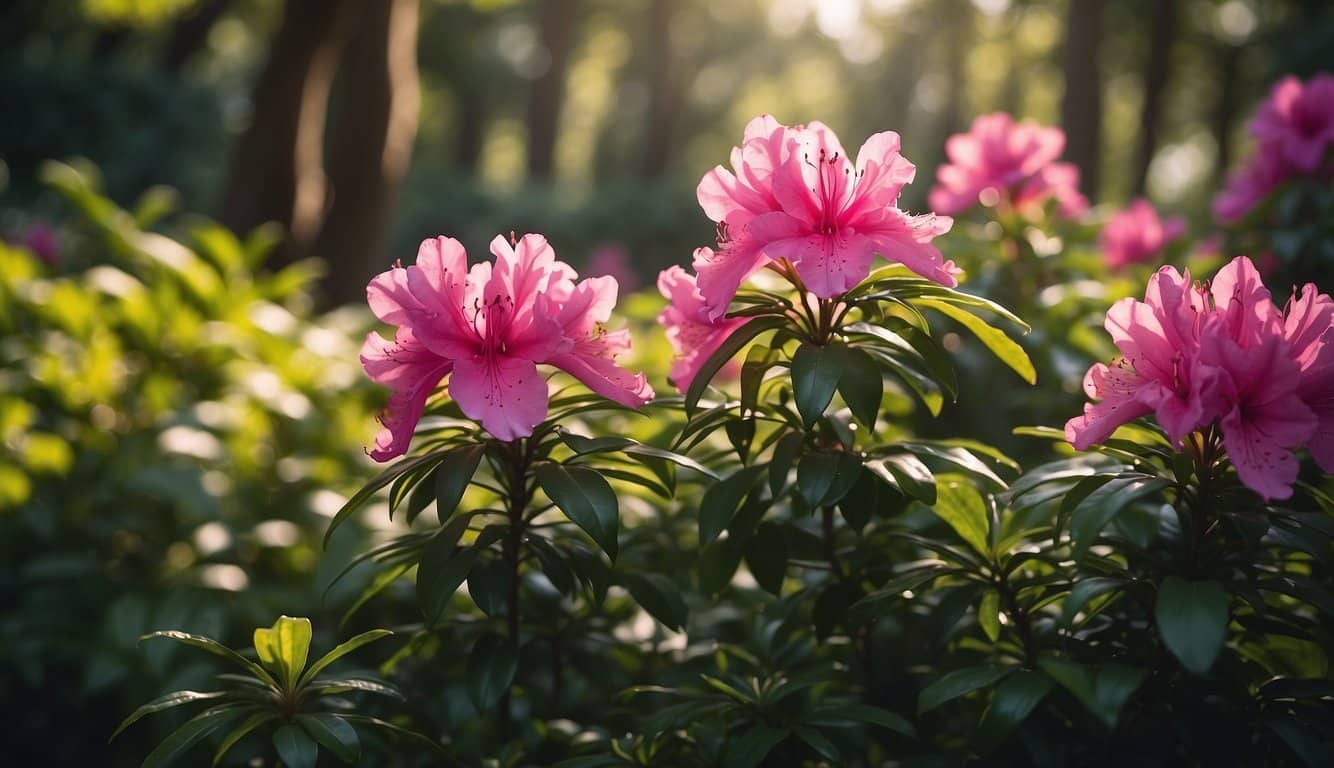Azalea ‘Duc de Rohan’, a member of the Rhododendron family, is a plant famed for its striking salmon-pink flowers that bring a vibrant splash of color from winter through mid-spring.
This evergreen shrub, adored by gardeners for its ornamental appeal, is particularly noted for its longevity. Under optimal conditions, it has the potential to thrive for over four decades.
With a mature height and width of approximately four feet, it maintains a modest size, making it suitable for a variety of landscape uses, including as a hedge, screen, or accent feature.
The ‘Duc de Rohan’ cultivar is a Southern Indica Hybrid that offers not just aesthetic value but also practical tolerance to heat, making it a preferred choice for gardeners in warmer climates within hardiness zones 8 – 9 and 14 – 24.
In terms of care, the preference for acidic, well-drained soils is a defining cultivation requirement for the ‘Duc de Rohan’ variety.
While this azalea’s rich green foliage is leathery and robust, careful site selection and soil management are vital to prevent issues such as iron chlorosis in alkaline conditions and root rot in waterlogged soils.
Key Takeaways
- Azalea ‘Duc de Rohan’ is recognized for its salmon-pink blooms and evergreen foliage.
- It’s suitable for a variety of landscaping purposes and thrives in acidic, well-drained soils.
- The plant is a long-living cultivar, fit for warmer climates and offers heat tolerance.
Origins and History
The Azalea ‘Duc de Rohan’ is a distinctive evergreen variety within the Rhododendron family, celebrated for its vibrant salmon-pink flowers.
This section will explore the breed’s development and its historical importance in horticulture.
Breeding Background
The ‘Duc de Rohan’ azalea is an evergreen member of the Rhododendron genus. Its roots can be traced back to Asia, from where many azaleas originate.
The breeding of ‘Duc de Rohan’ owes to hybridization efforts that combined the robust genetic traits of Rhododendron species. It is noted for its ability to withstand heat, a byproduct of selective breeding for resilience under varying climatic conditions.
Historical Significance
In the United States, the Southern Indian Hybrids, which include ‘Duc de Rohan,’ emerged in the Deep South during the mid-19th century.
They represent a lineage that includes contributions from the Belgian Indian hybrids and species such as R. indicum and R. simsii.
These hybrids were designed to be hardier than their Belgian counterparts, allowing them to thrive in less temperate climates.
The ‘Duc de Rohan’ azalea holds historical significance as a part of these hybridization efforts, showcasing the horticultural artistry and progress of that era.
Characteristics
The Azalea ‘Duc de Rohan’ is renowned for its adaptability to heat and distinctive floral display. This section elaborates on the growth habit and floral traits that set this variety apart in the world of evergreen shrubs.
Growth Habit
The ‘Duc de Rohan’ exhibits a growth pattern that is both compact and rounded, making it a suitable choice for an array of landscaping needs.
It thrives in well-drained, highly acidic, and organic soil.
In terms of its foliage, the ‘Duc de Rohan’ is outfitted with narrow, glossy, and dark green leaves contributing to its evergreen status and aesthetic appeal throughout the year.
Floral Traits
Each year, from late winter to early spring, this azalea variety showcases clusters of salmon-pink flowers.
These blooms are particularly noted for their single, funnel-shaped formation and a distinctive rose-pink blotch at their centers.
The flowers not only enhance the landscape but are also known to attract butterflies, adding dynamism to the garden.
Cultivation
Successful cultivation of the Azalea ‘Duc de Rohan’ involves specific planting conditions and ongoing care. It requires attention to soil quality and moisture as well as strategic pruning and fertilization.
Planting Conditions
- Soil: The Azalea ‘Duc de Rohan’ thrives in moist, humus-rich, and acidic soil.
- Sunlight: Partial shade is ideal for this azalea, protecting it from the harsh effects of full sun.
- Spacing: With a mature spread of about 4 feet, sufficient space should be allowed for growth.
Maintenance and Care
- Watering: Consistent moisture is crucial, but the plants must not be waterlogged. Proper drainage must be ensured.
- Fertilization: A balanced, slow-release fertilizer designed for acid-loving plants can be used.
- Pruning: To maintain shape and encourage bushiness, pruning should occur just after the blooming period.
Pests and Diseases
Azalea ‘Duc de Rohan’ can encounter various pests and diseases that affect its health and aesthetics. Prompt identification and appropriate response are crucial for maintaining the health of these plants.
Common Threats
Pests:
- Azalea Leafminers: These pests burrow between the upper and lower surfaces of leaves, resulting in brown blisters or yellowing.
- Stunt Nematode: These tiny organisms attack azalea feeder roots, potentially stunting the plant’s growth.
Diseases:
- Fungal and bacterial pathogens may cause root rot, leaf spot, and other foliage diseases.
Prevention and Treatment
Prevention:
- Ensure proper spacing between plants to reduce humidity and improve air circulation.
- Implement a suitable watering routine that avoids waterlogged soil.
Treatment:
- For Pests:
- Remove and destroy affected foliage.
- Apply appropriate, mild insecticides considering the miniature nature of the bonsai.
- For Diseases:
- Remove affected plant parts to prevent spread.
- Use fungicides as necessary, following product guidelines for application rates and frequencies.
Frequently Asked Questions
Azaleas are highly sought after for their vibrant blooms and ‘Duc de Rohan’ is among the favored varieties. Gardening enthusiasts often have questions about their care, bloom frequency, and ideal growing conditions.
How do you care for ‘Duc de Rohan’ azaleas?
‘Duc de Rohan’ azaleas require moist, well-drained soil and benefit from deep watering on a weekly basis.
Pruning should be minimal, cutting back new growth to maintain shape and support a thicker trunk.
What is the most beautiful variety of azalea?
Beauty is subjective, but ‘Duc de Rohan’ azaleas are often admired for their salmon-pink flowers with deep pink centers, offering a visually striking addition to gardens.
Which azalea varieties thrive in full sun conditions?
Most azaleas require partial shade, but some varieties like the Sunbow series can tolerate more sun, though they still need protection from harsh afternoon light.
How often do azalea plants bloom within a year?
Azaleas typically bloom once a year, in the spring, with their flowering period lasting several weeks. However, some of the re-blooming varieties may flower again in the fall.
What are the ideal growing conditions for ‘Pride of Dorking’ azaleas?
‘Pride of Dorking’ azaleas thrive in acidic, well-drained soil and partial shade. Consistent moisture without waterlogging promotes healthy growth and flowering.
Can ‘Pink Lace’ azalea tolerate cold weather climates?
‘Pink Lace’ azalea is generally hardy and can withstand cold weather climates. However, it is important to provide protection from harsh winter winds. Also, make sure to mulch the root zone to ensure root health during colder months.
